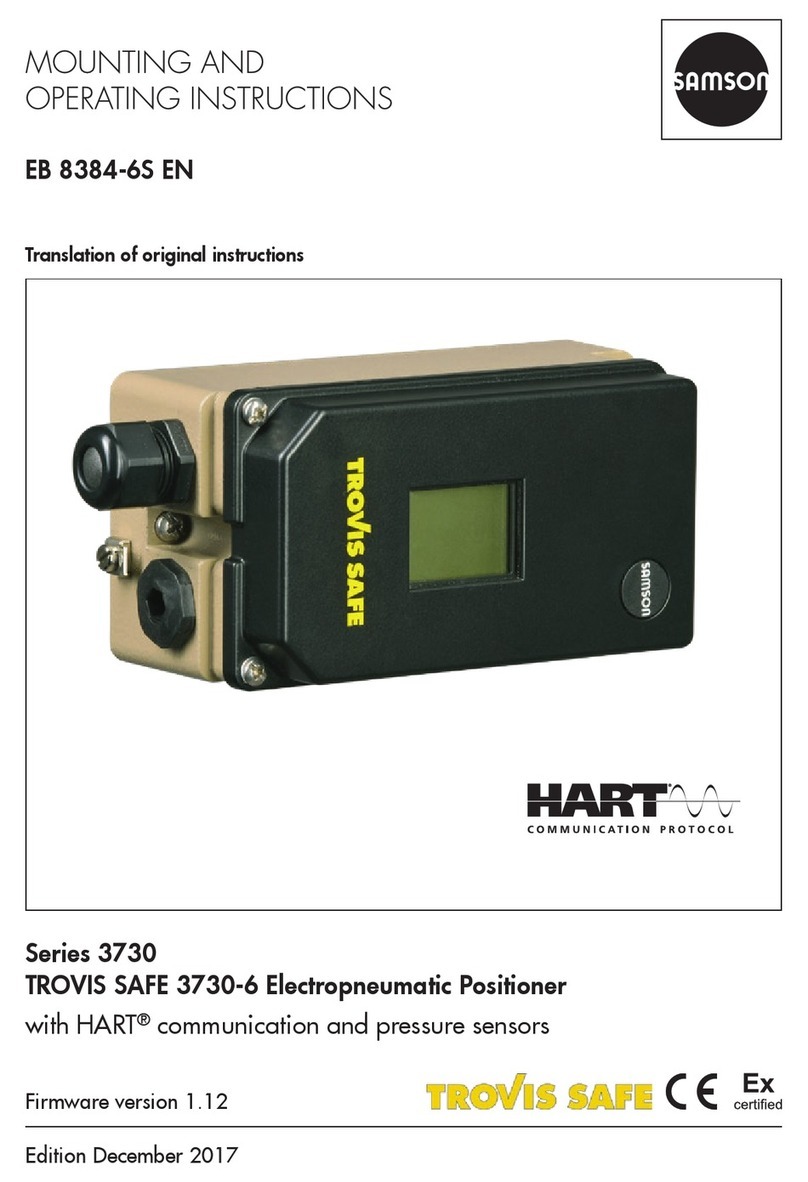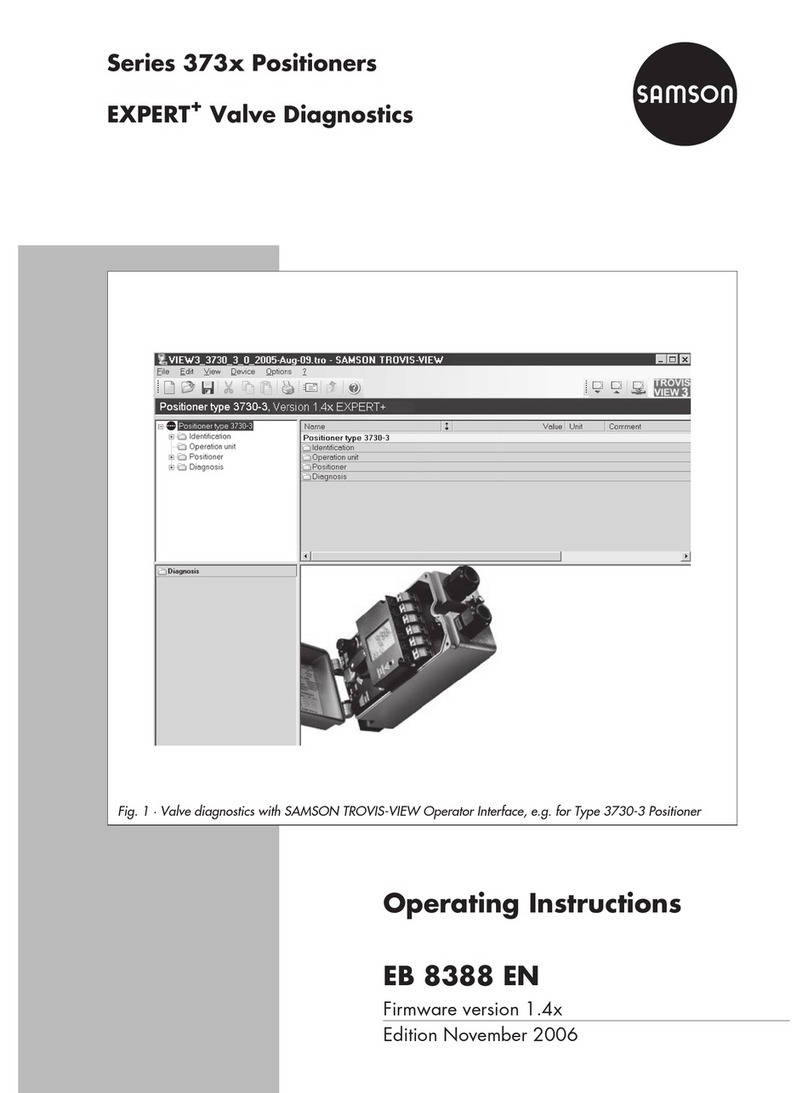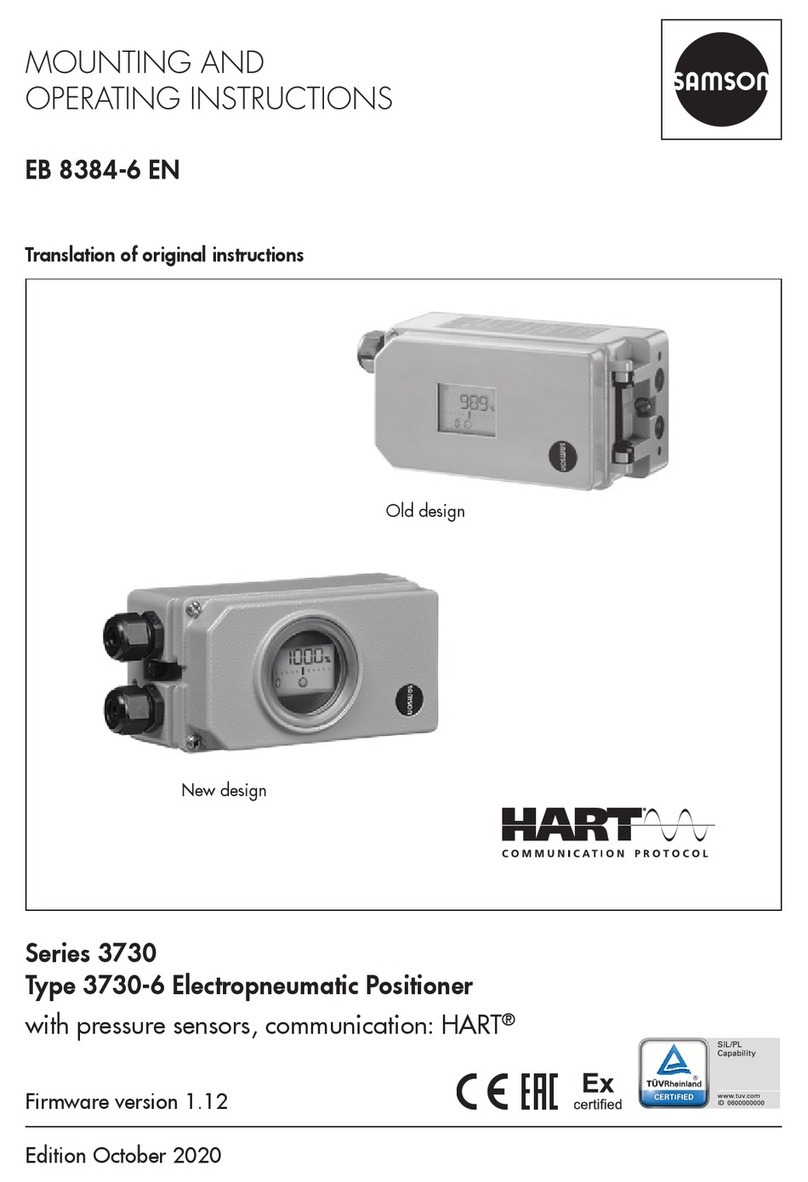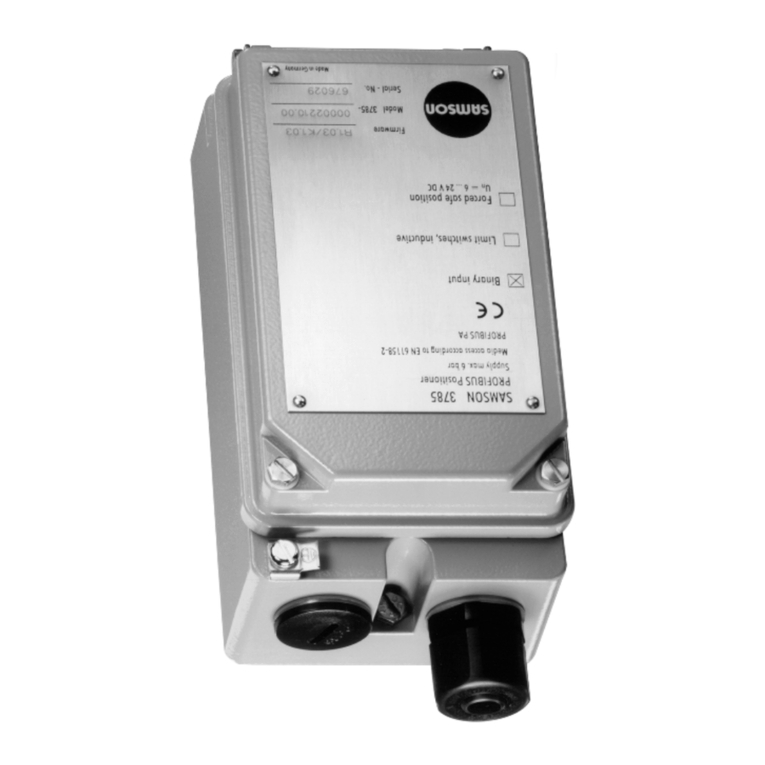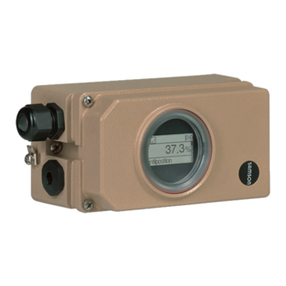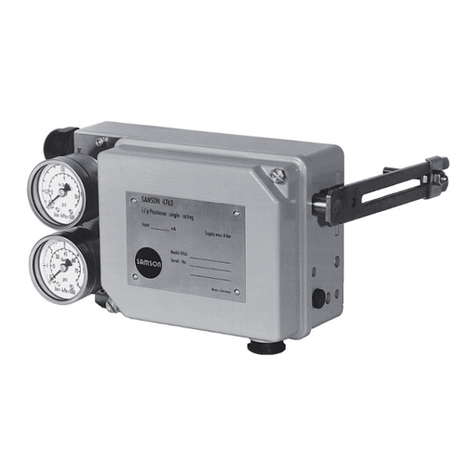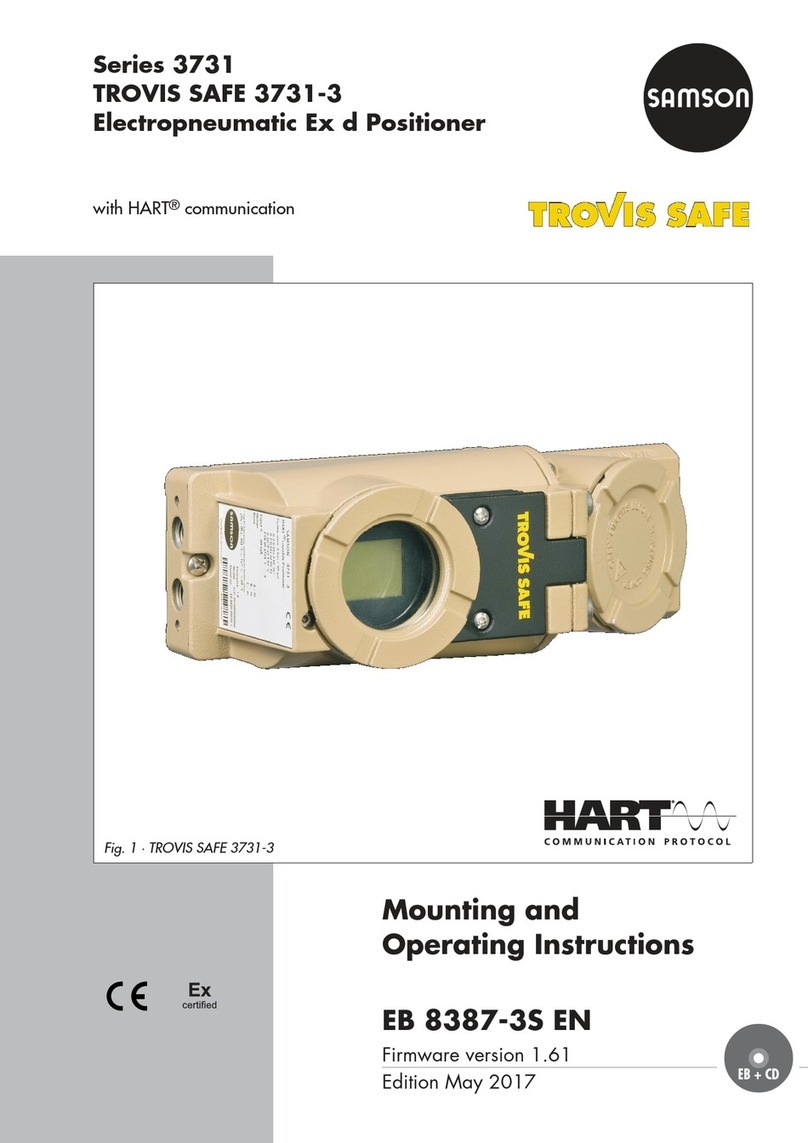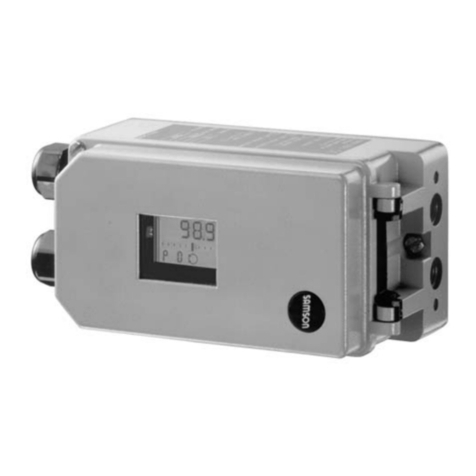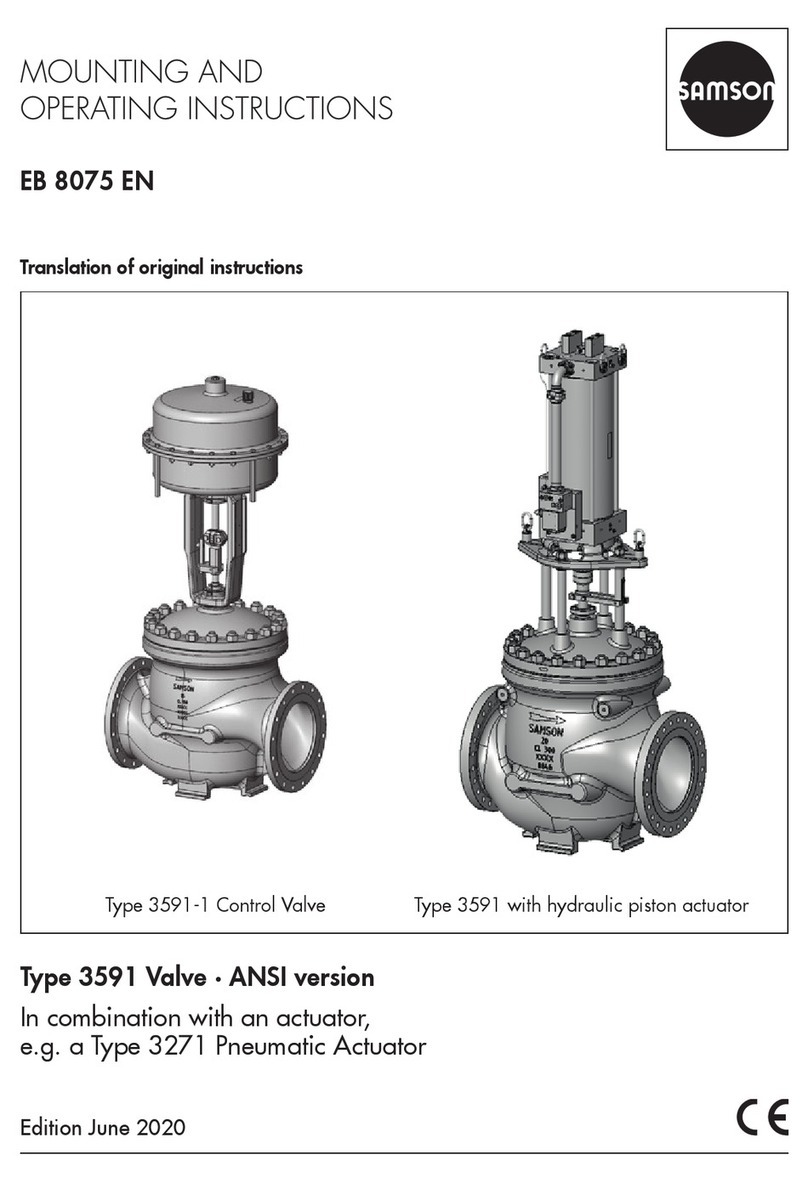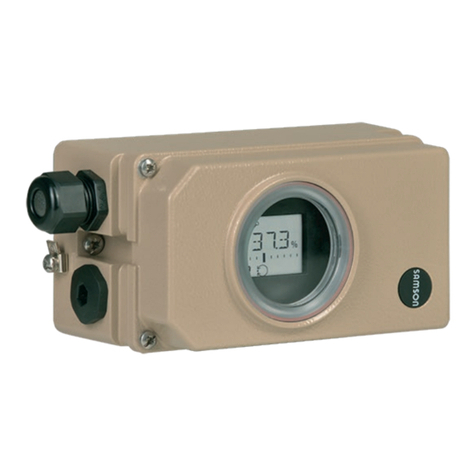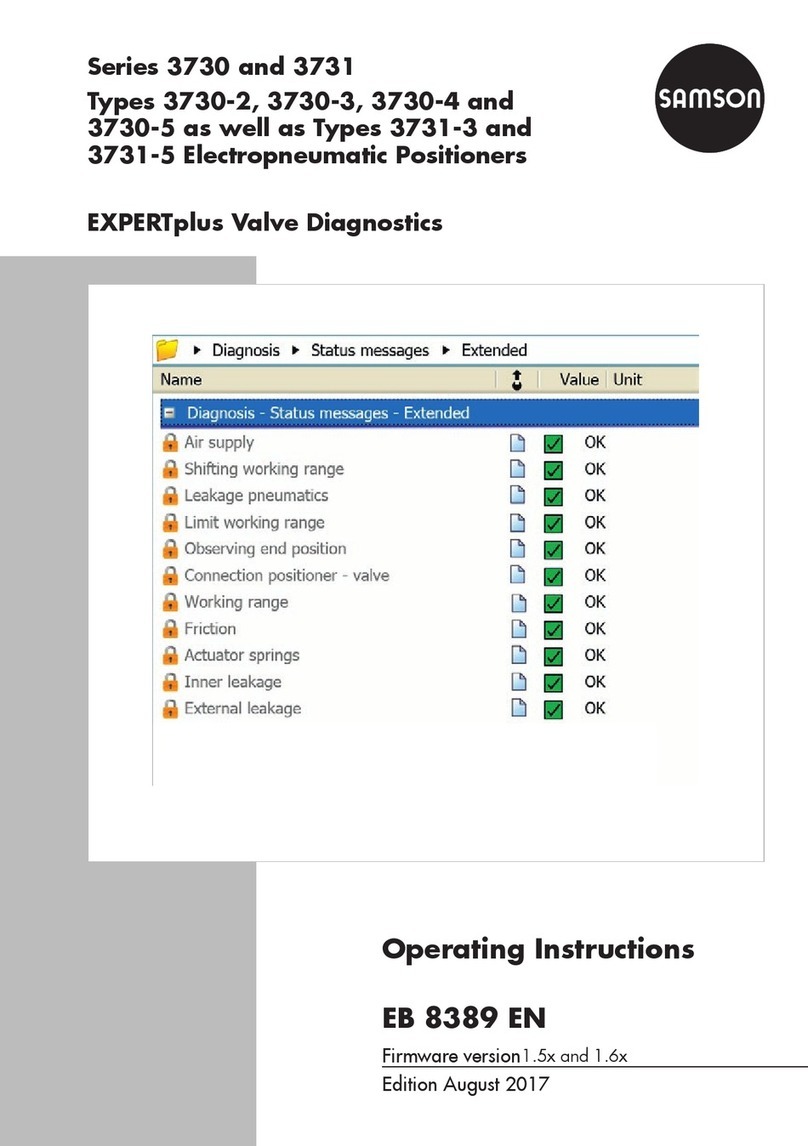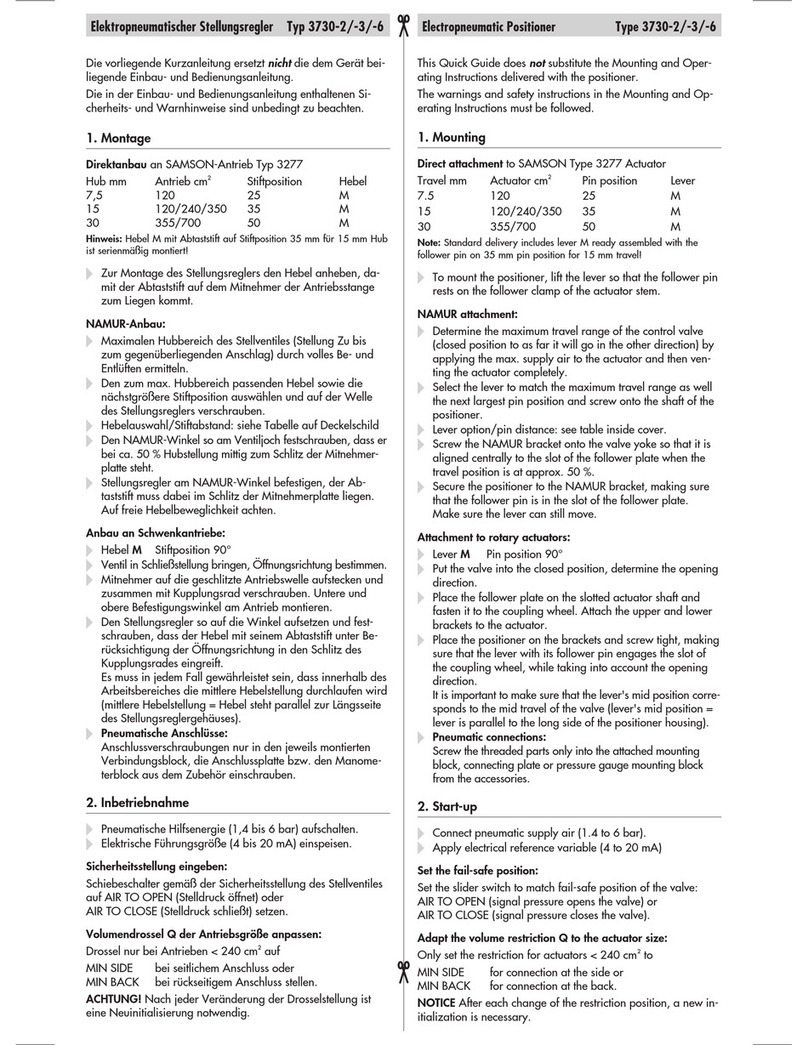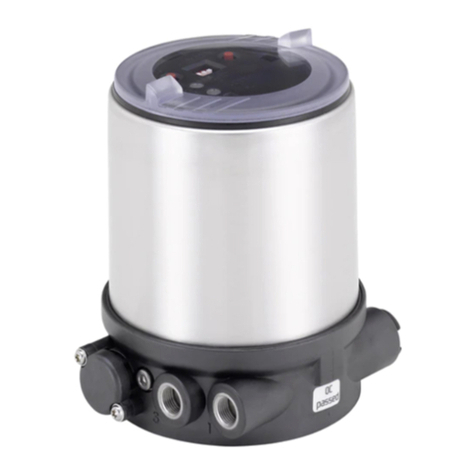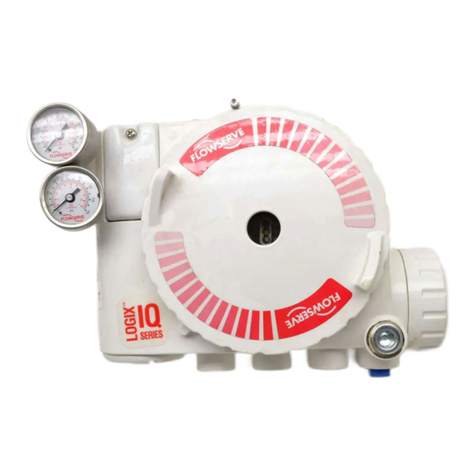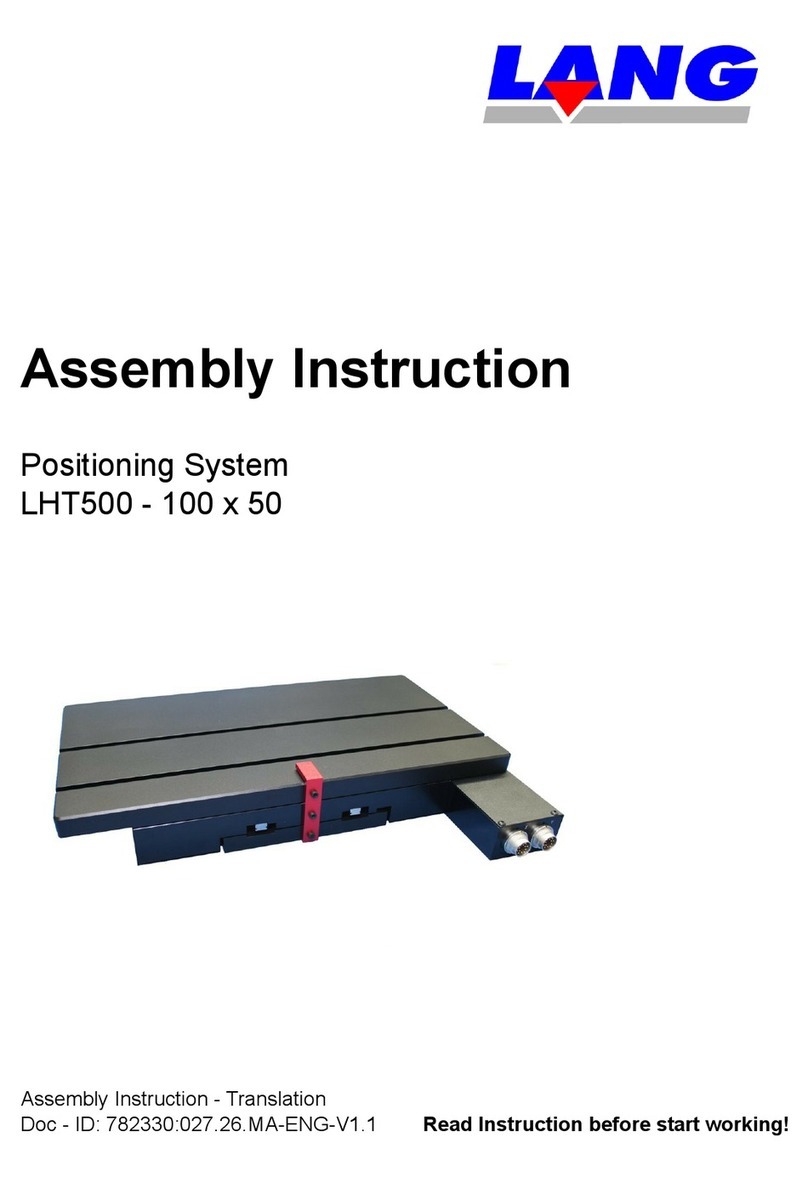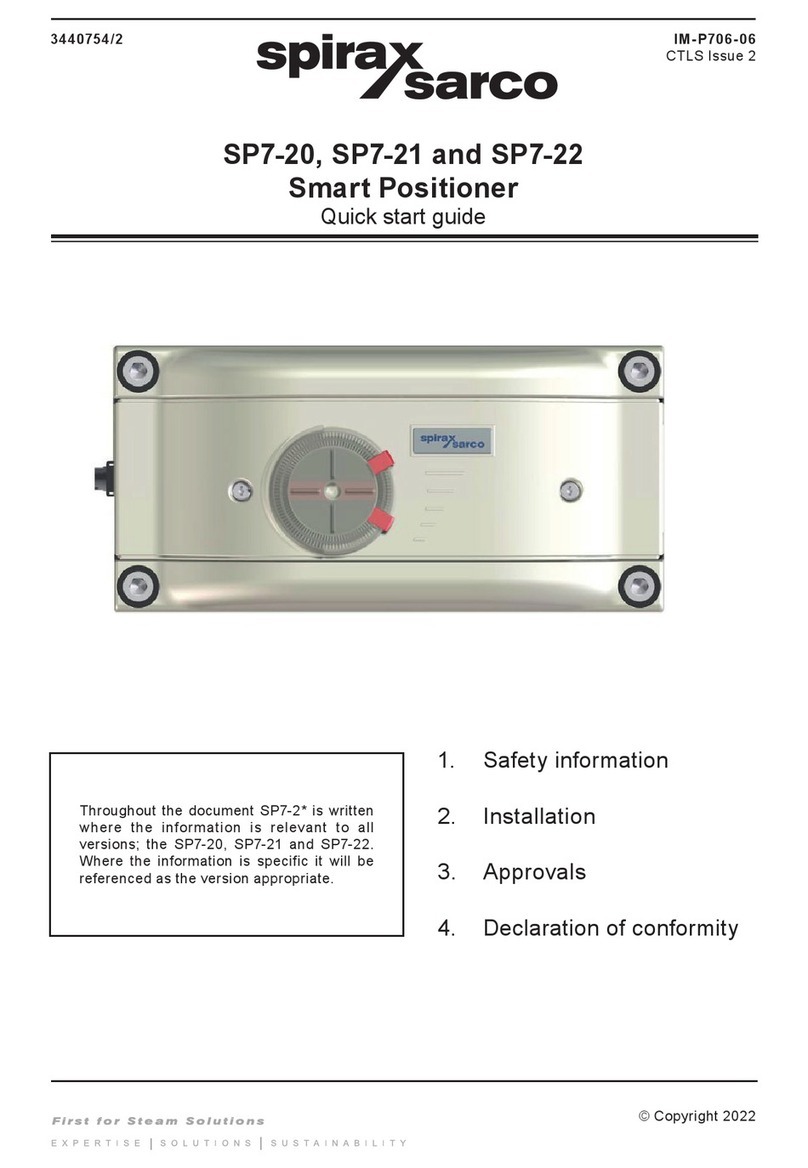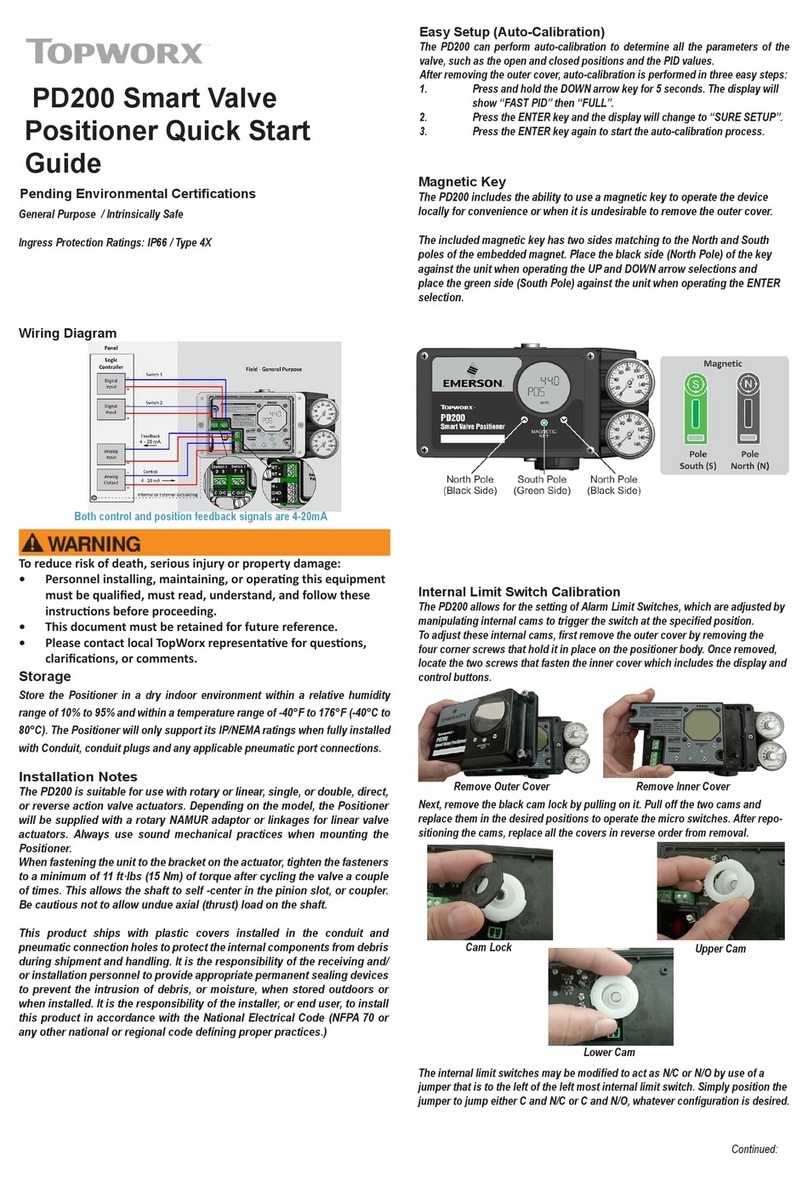1. Design and principle of operation
The positioner essentially consists of an in-
ductive, non-contact travel measuring sys-
tem and an electrically controlled valve
block comprising two 2/2-way on-off
valves and an electronic unit. This unit con-
tains two microcontrollers for processing the
control algorithm and managing the com-
munication.
Whenever a deviation between the actual
valve travel (actual value) and the reference
variable (set point) occurs, the microcontrol-
ler produces binary pulse-pause modulated
signals to control the two 2/2-way on-off
valves, each of which is assigned an am-
plifier. One of these valves controls the ex-
haust air, and the other one controls the sup-
ply air.
The supply air valve (3) switches the supply
air (7, supply air pressure 1.4 to 6 bar) to
the actuator (filling). The exhaust air valve
(4) controls the air exhausted from the actu-
ator to the atmosphere (venting). These on-
off valves can either have the switching
states - permanently open, permanently
closed - or generate single pulses of chang-
ing widths. With the two valves being con-
trolled, the plug stem moves to a position
corresponding to the reference variable. If
there is no system deviation, both the supply
air and the exhaust air valve are closed.
As a standard feature, the positioner is
equipped with a fault alarm output (binary
output according to N 60947-5-6) used to
signalize a fault to the control room.
Activating the write protection switch lo-
cated in the hinged cover prevents the posi-
tioner settings from being overwritten by the
HART® protocol.
Forced venting function
The positioner is controlled via a 6 to
24 V signal, causing the signal pressure
to be applied to the actuator. If this volt-
age signal decreases, the signal pressure is
shut off and the actuator is vented. The
springs contained in the actuator move the
valve to its fail-safe position.
The forced venting function is installed in all
positioners from model index .03 or higher.
The function can be activated or deacti-
vated by a switch. See section 4.2 (page
34) for more details.
1.1 Options
As a supplement to the standard positioner
version, there are several additional options
to extend the positioner functions.
Limit switches
To signalize the valves end positions in fail-
safe circuits, either two software limit swit-
ches or two proximity switches can be used.
Position transmitter
The position transmitter is an intrinsically
safe 2-wire transmitter controlled by the
microcontroller of the positioner. It serves to
assign the valve position with the 4 to 20
mA output signal. The position transmitter
signalizes both end positions, "valve closed"
or "valve fully open", as well as all inter-
mediate positions. Since the valve positions
are signalized to the positioner inde-
pendently of the input signal (minimum
current must be observed), the position
transmitter is a suitable option for checking
the current valve position.
10 EB 8380-1 EN
Design and principle of operation



